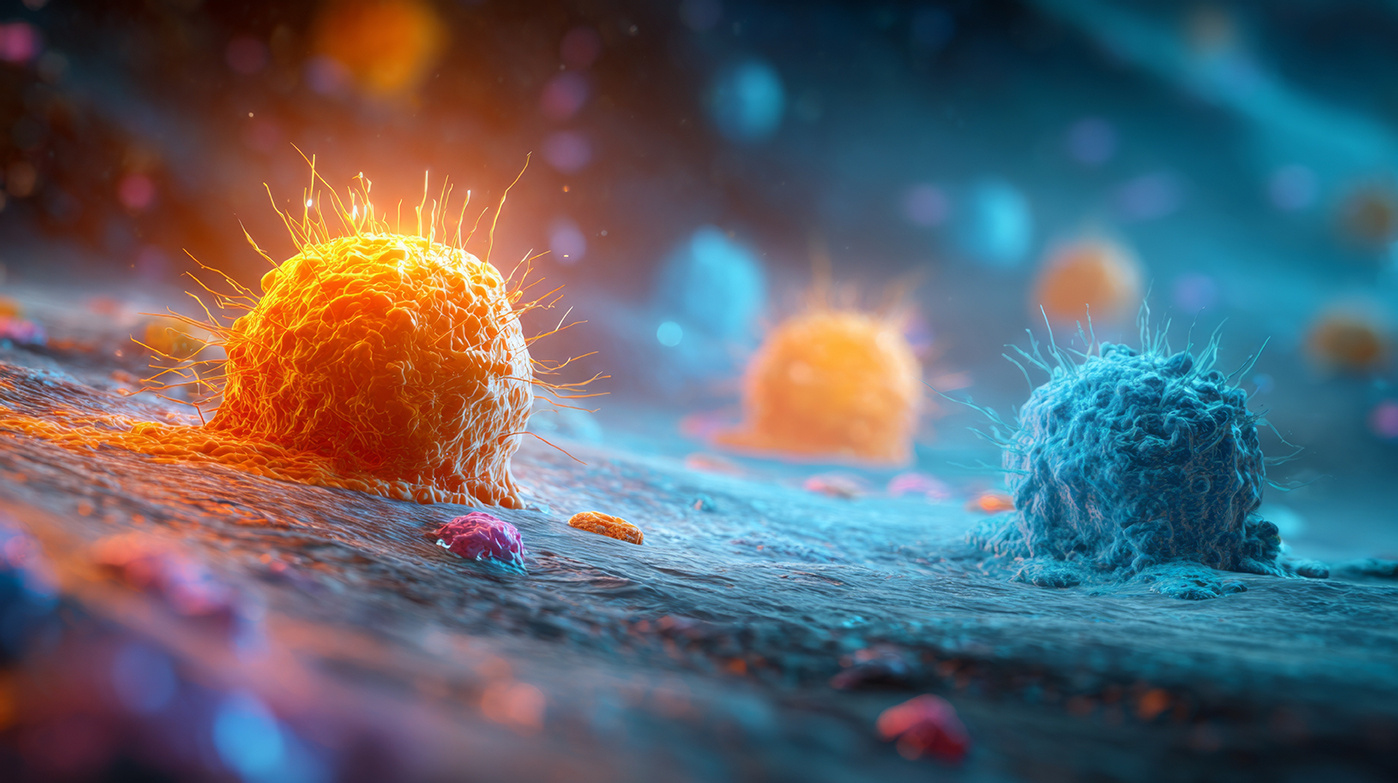- Chris Comans
- 0 Comments
Most Australians associate skin cancer with the summer sun — and with good reason. Yet beneath that familiar story lies another: cancers that form not from UV damage, but from changes in immunity and viral infection.
Our skin isn’t just a barrier; it’s an immune organ. Every day, immune cells patrol its surface, repairing damage and removing cells that behave abnormally. When that surveillance system weakens — whether through illness, medication, or viral interference — the balance can shift, and cancers can appear in unexpected places.
The Skin–Immune Connection
The skin’s immune system is like an ever-alert neighbourhood watch. It recognises danger — infection, injury, or cellular mutation — and quickly recruits reinforcements.
When this process works, abnormal cells are destroyed long before they can form tumours. But in people whose immunity is reduced, these damaged cells can survive and multiply.
There are two key ways this happens:
- Viral hijacking — when viruses embed their genetic material into skin cells and push them to grow abnormally.
- Immune suppression — when medications or illnesses silence the body’s normal defences
Viral Culprits
Human Papillomavirus (HPV)
While best known for cervical cancer, certain “high-risk” HPV strains can also cause skin cancers, especially squamous cell carcinoma (SCC). These often appear on the fingers, around nails, or in genital and perianal skin.
Persistent infection rather than brief exposure is the problem, which is why vaccination and early treatment of warts or chronic HPV lesions are so important.
Merkel Cell Polyomavirus
Discovered only in 2008, this tiny virus plays a major role in Merkel cell carcinoma (MCC) — a rare, aggressive cancer of the skin’s touch receptor cells. It typically presents as a rapidly growing, painless nodule that may look harmless at first. MCC is more common in older adults and people with compromised immune systems. Early detection and referral to specialist care are crucial, as the cancer can spread quickly.
Human Herpesvirus 8 (HHV-8)
This virus is responsible for Kaposi sarcoma, a vascular cancer that forms purple or brown patches or nodules, usually on the legs or face. It often occurs in people with HIV or those on long-term immune-suppressive medications, including organ-transplant recipients.
While most people infected with these viruses never develop cancer, a weakened immune system can allow these dormant infections to “wake up.”
The Role of Immunosuppression
Immunity can be reduced in many ways:
- Organ or bone-marrow transplantation (due to anti-rejection drugs)
- Long-term corticosteroid therapy for autoimmune conditions
- HIV infection or other diseases affecting immune cells
- Certain cancer treatments, including chemotherapy and biologics
These patients face higher rates of skin cancer — not just the usual sun-related ones, but also rarer, more aggressive forms. Squamous cell carcinomas may grow faster, recur more often, and appear in unusual locations such as the scalp, lips, or perianal region.
Regular skin surveillance becomes a part of ongoing medical care. For many transplant patients, six-monthly professional skin checks are recommended, along with diligent self-monitoring between visits.
Signs That Deserve a Closer Look
- A new lump or plaque that grows rapidly
- Ulcers or sores that fail to heal within a few weeks
- Discoloured or shiny nodules on the face, legs, or genitals
- Sudden changes in existing scars or chronic wounds
- Any spot that bleeds easily or feels tender without reason
These symptoms don’t always mean cancer, but in people with immune suppression, it’s safer to have them assessed early.
Protection Beyond the Sunscreen
For those living with long-term immune conditions or on immune-modifying medications, prevention involves more than avoiding UV rays:
- Vaccination – HPV vaccination provides strong protection against high-risk strains.
- Routine monitoring – Schedule skin checks every 6–12 months, depending on medical advice.
- Lifestyle support – A balanced diet, regular sleep, and stress management can all help maintain immune balance.
- Sun protection – Still essential; the risks are additive, not exclusive.
Clinically, we often remind patients that the goal is partnership — between their treating specialists, general practitioner, and skin-check clinician — to keep any changes detected early and treated promptly.
Awareness Saves Lives
At Skin ChX, we regularly see patients who assume their sun protection makes them “low risk.” Yet even those who work indoors, who rarely tan or burn, can develop skin cancers linked to viruses or immune suppression.
Understanding these pathways allows for earlier recognition and faster treatment — often before cancers spread.
If you’re living with a chronic illness, taking long-term medication, or have noticed any unusual skin changes, book a comprehensive skin check. Awareness is the first step toward prevention, and prevention begins with knowing that not all skin cancers come from the sun.
